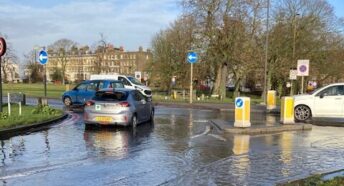'Stop the chop' - action to protect our trees
Strong local policies and community action are urgently needed to prevent tree loss.
As part of National Tree Week (28th November-6th December) and to celebrate the online launch of Robert Walter’s Living with Trees last week, we have collated a ten-point plan for the enhancement and protection of London’s trees.
CPRE London has been involved in the preparation of the Mayor’s Urban Forest Plan launched today and will be involved in helping to deliver aspects of it – including work on promoting tree and woodland planting in the Green Belt.
The priority must be to protect and nurture London’s existing trees.Yet, in boroughs all over the capital trees are constantly threatened by development, even those that are meant to be officially protected. This includes even the most special trees such as the veteran Bethnal Green Mulberry currently at risk from plans to redevelop a former hospital site. Plans for new trees often fail to materialise or newly planted die within a few years due to inadequate care with no enforcement action taken.

The Bethnal Green Mulberry Tree
We believe that community engagement and local planning policies should be implemented to ensure the protection of trees from development and the successful establishment of new trees.
Our ten-point plan to combat tree loss:
1. Enforce policies to protect existing trees rigorously, including Tree Protection Orders and Conservation Area controls, with no tree lost to development unless alternative options and designs have been fully considered, or felling is in line with a sustainable woodland management plan.
2. Strengthen Local Plan policies to require an increase in tree canopy, including the planting of semi-mature replacement trees where suitable. There should be at least a 20% increase in tree canopy cover in London by 2050 in our shared manifesto for the next Mayor of London A More Natural Capital.
3. Audit the condition and distribution of existing trees as the basis for establishing management priorities and providing guidance on the best locations for future tree planting.
4. Anticipate future climate change and maximise the benefits for wildlife, pollution control and shade in the choice of tree species.
5. Replace any trees lost to development within two years and invite local communities to nominate locations for new street trees every year.
6. Strengthen Local Plan policies to extend the requirements for the evaluation of individual trees in development proposals with financial and ecosystem assessment of the value of any trees in accordance with i-Tree Eco UK and CAVAT methods.
7. Introduce and rigorously enforce planning conditions requiring all new trees to be maintained or replaced for a minimum of five years from completion of development.
8. Address the importance of existing and new trees in character studies, design codes, masterplans and Conservation Area Appraisal and Management Plans, and develop plans to increase tree canopy cover in ways which enhance distinctive local tree populations.
9. Provide the infrastructure, resources and management systems needed to support effective tree maintenance across the borough including providing taps and mobile bowsers for use by local volunteers; ensuring the mowing regime for green spaces and road verges avoids tree damage; and requiring contractors to undertake planting, watering and maintenance of new trees in parks and green spaces in collaboration with Friends and like-minded groups.
10. If all else fails, use the local media to draw attention to any tree loss due to development and other causes in your area. It is important to demonstrate what is at risk of being lost to put pressure on local councils to take action.
These points are based on a plan developed for Mitcham by CPRE London’s Chairman, Tony Burton CBE. Read more about Mitcham’s tree loss here.








